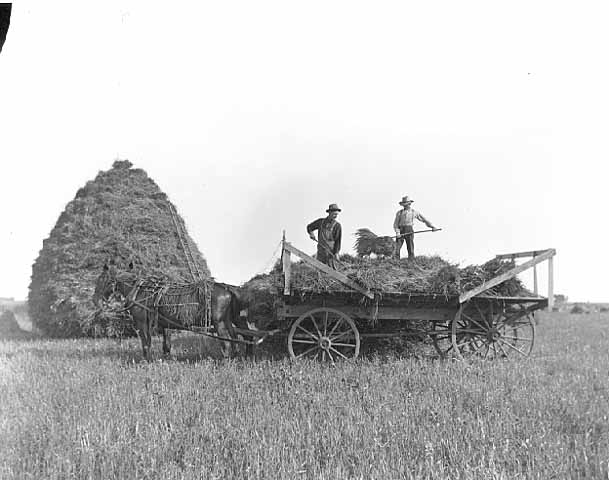
Friday March 30
ODC Theater, San Francisco
"Mountain"
Deborah Hay is a hard one to catch. Years ago, she used to roll into town, often in the summer, and have a quiet interlude at Dancers Group/Footwork. She’d offer a workshop. Give a performance. And slip away. Appropriate to a performer whose work took the A out of art and reclaimed the exalted in the ordinary, she didn’t advertise much, if at all, as though you had to be drawn to her by rumor, magnetism or chance. I’d see a flyer, contemplate the moment, then I’d miss her, and each time I felt regret. I’d seen a couple of her group pieces, but long wondered what other kind of treasure this choreographer-Zen-naturalist might conjure. Now I know.
Hay hails from Brooklyn, and she eventually crossed the bridge to Manhattan and trained with James Waring, Merce Cunningham and Mia Slavenska. She performed with the Cunningham Company in 1964 when that small band of gypsies traveled through Europe and Asia. Then, as part of Judson, she became one of the juggernauts that broke out from the Cage/Cunningham experiments and further exploded the rules of modern dance. Hay is the one most renowned for breaking down the barriers between trained and untrained performers. She migrated to Vermont, then eventually to Austin, Texas, taking an approach to dance that had a conceptual as well as Zen bent—long, deep projects culminating in performance with or without an audience. From these she turned to solo work designed in collaboration with highly trained dancers. That’s where Friday night comes in.
She named the piece “Mountain” and set it on three superb dancers from Seattle, who worked with Hay over a period of a month in Bellingham, Washington: Peggy Piacenza, Gaelen Hanson and Amelia Reeber. The mountain that inspired Hay was Mt. Rainier, which, if you’ve ever flown the Northwest corridor, rises up out of the Cascade Volcano Belt with a majesty and vehemence that is almost shocking. That specific geological formation, however, was not literally the subject or point of the piece; it was the hidden life and ever-changing nature of a mountain that grabbed her.
But the idea of a mountain was just the starting point. The dance destination, half of it choreographed by Hay, the other half crafted as three solos created by each dancer from material performed in the first half, suggested all sorts of mountain-like qualities—triangular, difficult, enigmatic, weird and powerfully constructed. Put forbidding in there, too. I realized as I watched the intrigue going on in the gallery space that it had been a long time since I’d seen dance that forced the imagination open so whimsically and boldly. It was movement that defied, again and again, easy reduction, like texts by Gertrude Stein or an early Bruce Nauman video. Yet, as far as I was aware, only two people left the theater, and even they hung in most of the way.
Leaving childhood is, in part, to forget how strange existence is. Yet, from the moment the three dancers appeared bedecked in cottony stuff—poodle-like on the ankles of one, running like a raccoon tail or Mohawk on another, like stray fluff on the head of a third—it was clear that Hay not only hasn’t forgotten but is driven to plumb that strangeness. “Mountain” began with layers of wacky Northwest echoes of pioneers and Native Americans, trailer trash and call girls. The trio, each distinct and exquisitely expressive, performed non-virtuosic movements with enormous virtuosity, moving together but intensely apart so that the space they occupied seemed to grow denser by their presence. It’s hard to say what they did--they zipped, turned, squiggled, fell. One who wore a conical cap with the cottony stuff on top, like a zany princess, said “Quit” and fell to the floor. At times they used props--small hand bells, a tambourine, rattles. But they were employed with such unexpected flourish that it was slapstick and dreamy both.
Amelia Reeber I think it was muttered words with a grizzled intensity-- “… rip, thrash, hack, thrash”--like you’d imagine a small, wizened forest creature growling, or a child inventing the utterances of a frog that had watched Lewis and Clark scouting the woods. Whatever they said, because of the dislocated aspect of their sounds, assumed gnomic import. And then, while the eye rested on a familiar fourth position placement, the mind took in something deeper--an existential position, a place of rest and beauty that seemed only accidentally related to ballet.
The solo portion upped the ante and washed over us like three beautiful arias performed in a lost language, each weird, stunning and evocative, whether it was Amelia Reeber’s with her fire backdrop and cotton-covered skateboard, Peggy Piancenza’s Brunhilda/Sacagawea, or Gaelan Hanson’s exquisite boho Indian/cowgirl, which she performed with flawless integrity and physical grace. It made me think of kids making a divine cake with nothing but a bit of dust and endless honesty.
No comments:
Post a Comment